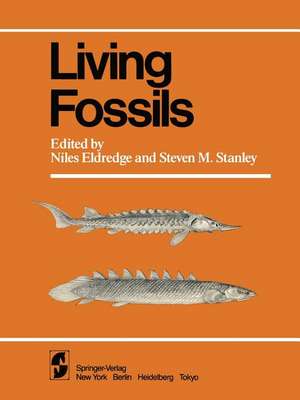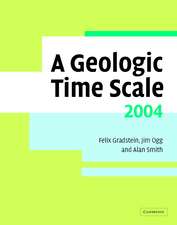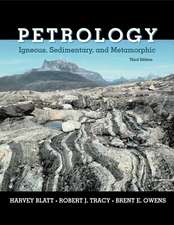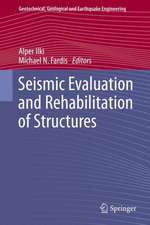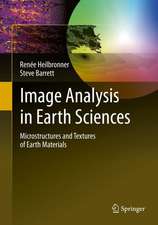Living Fossils: Casebooks in Earth Sciences
Editat de N. Eldredge, S. M. Stanleyen Limba Engleză Paperback – 26 dec 2011
Preț: 650.37 lei
Preț vechi: 765.14 lei
-15% Nou
Puncte Express: 976
Preț estimativ în valută:
124.47€ • 129.60$ • 105.19£
124.47€ • 129.60$ • 105.19£
Carte tipărită la comandă
Livrare economică 10-24 martie
Preluare comenzi: 021 569.72.76
Specificații
ISBN-13: 9781461382737
ISBN-10: 1461382734
Pagini: 308
Ilustrații: 291 p.
Dimensiuni: 210 x 280 x 16 mm
Greutate: 0.69 kg
Ediția:Softcover reprint of the original 1st ed. 1984
Editura: Springer
Colecția Springer
Seria Casebooks in Earth Sciences
Locul publicării:New York, NY, United States
ISBN-10: 1461382734
Pagini: 308
Ilustrații: 291 p.
Dimensiuni: 210 x 280 x 16 mm
Greutate: 0.69 kg
Ediția:Softcover reprint of the original 1st ed. 1984
Editura: Springer
Colecția Springer
Seria Casebooks in Earth Sciences
Locul publicării:New York, NY, United States
Public țintă
ResearchCuprins
Living Fossils: Introduction to the Casebook.- 1. Evolutionary Stasis in the Elephant-Shrew, Rhynchocyon.- 2. The Tree Squirrel Sciurus (Sciuridae, Rodentia) as a Living Fossil.- 3. The Tree-Shrew, Tupaia: A “Living Model” of the Ancestral Primate?.- 4. What is a Tarsier?.- 5. Are There Any Anthropoid Primate Living Fossils?.- 6. Evolutionary Pattern and Process in the Sister-Group Alcelaphini-Aepycerotini (Mammalia: Bovidae.- 7. Tapirs as Living Fossils.- 8. Tragulids as Living Fossils.- 9. Conceptual and Methodological Aspects of the Study of Evolutionary Rates, with Some Comments on Bradytely in Birds.- 10. Crocodilians as Living Fossils.- 11. Family Chanidae and Other Teleostean Fishes as Living Fossils.- 12. Denticeps clupeoides Clausen (1959): The Static Clupeomorph.- 13. Polypterus and Erpetoichthys: Anachronistic Osteichthyans.- 14. Sturgeons as Living Fossils.- 15. The Neopterygian Amia as a Living Fossil.- 16. Family Lepisosteidae (Gars) as Living Fossils.- 17. The Coelacanth as a Living Fossil.- 18. “Notidanus”.- 19. Cephalocarida: Living Fossil Without a Fossil Record.- 20. Leptostraca as Living Fossils.- 21. Anaspidid Syncarida.- 22. The Xiphosurida: Archetypes of Bradytely?.- 23. Peripatus as a Living Fossil.- 24. Neopilina, Neomphalus and Neritopsis, Living Fossil Molluses.- 25. Pleurotomaria: Pedigreed Perseverance?.- 26. The Giant Creeper, Campanile symbolicum Iredale, an Australian Relict Marine Snail.- 27. Diastoma melanioides (Reeve), a Relict Snail from South Australia.- 28. The Relict Cerithiid Prosobranch, Gourmya gourmyi (Crosse).- 29. Neotrigonia, the Sole Surviving Genus of the Trigoniidae (Bivalvia, Mollusca).- 30. Is Nautilus a Living Fossil?.- 31. The Bryozoan Nellia tenella as a Living Fossil.- 32. The Cretaceous Coral Heliopora(Octocorallia, Coenothecalia)—a Common Indo-Pacific Reef Builder.- 33. Simpson’s Inverse: Bradytely and the Phenomenon of Living Fossils.- 34. Does Bradytely Exist?.
